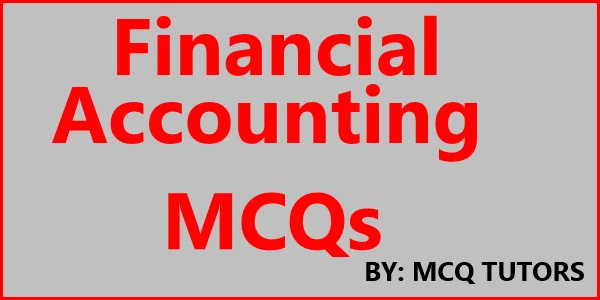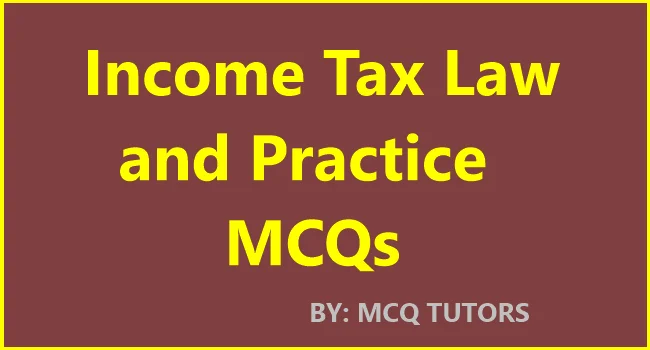Financial System & Commercial Banking MCQs with Answer
Are you looking for Financial System & Commercial Banking MCQs with Answer? If so, then you have come to the right place! In this article, we will provide you with a comprehensive set of Financial System & Commercial Banking MCQs that will help you strengthen your understanding and knowledge of this topic — whether you’re preparing for exams or planning to masterarbeit schreiben lassen for deeper academic insight.
With these MCQs, you can test your understanding of different aspects related to the Financial System & Commercial Banking.

50 Financial System & Commercial Banking MCQs with Answer
1. The part of the capital markets that deals with the issuance of new securities is known as-
a. Money market
b. Primary market
c. Secondary market
d. Derivative market
Ans. b
2. One of the basic services provided by the financial institutions where buying financial claims denominated in one currency and selling financial claims denominated in another currency is called-
a. Quantity Divisibility
b. Currency Alteration
c. Maturity Flexibility
d. Credit Risk Diversification
Ans. b
3. A mutual fund is a trust that pools the savings of a number of ___ who share a common financial goal.
a. Societies
b. Companies
c. investors
d. Association of person (AOP & BOI)
Ans. c
4. Which document is required to be filed to SEBI for observations by company or listed company before making any public Issue or right Issue?
a. Financial summery
b. B/s & P&L A/c
c. Draft offer document
d. Financial ratio
Ans. c
5. Which market does deal with the multicurrency requirements?
a. Money market
b. Capital market
c. Forex market
d. Credit market
Ans. c
6. Which market does provide a tool to manage the liquidity and interest rate in the economy?
a. Capital market
b. Forex market
c. Credit market
d. Money market
Ans. d
7. Which money market instrument that does not required any type of collateral security?
a. Call/Notice money
b. treasury bills
c. Commercial papers
d. Bankers acceptance
Ans. a
8. What is the fixed maturity period for commercial paper?
a. 1 to 180 days
b. 1 to 270 days
c. 1 to 365 days
d. 1 to 90 days
Ans. b
9. Which lease contract is considered to be non-cancelable?
a. Service lease
b. Operating lease
c. Financial lease
d. Long term lease
Ans. c
10. At which price goods are sold in hire purchase agreement?
a. Cost plus interest
b. Sale plus Interest
c. Market Price
d. Index price
Ans. b
11. Who does execute buying and selling on the floor of the stock exchange?
a. Commission broker
b. Floor broker
c. Tataniwala
d. Budiwalas
Ans. a
12. Who is a jobber or specialist in selected shares?
a. Commission broker
b. Flow broker
c. Tataniwala
d. Budiwalas
Ans. c
13. What is the name of quantitative measure in which RBI purchases and sells securities?
a. Bank rate policy
b. Open market operation
c. Report/reverse report
d. Cash Reserve Ratio
Ans. b
14. Write down the name of the policy which has the objective to ensure adequate expansion in credit to assist economic growth.
a. Monetary policy
b. Economic policy
c. Banking policy
d. Accounting policy
Ans. a
15. The name of quantitative measure in which discount rate which a central bank charges on the loans and advances is ___.
a. Open market operation
b. Bank rate policy
c. Repo/ reverse repo
d. Cash Reserve ratio
Ans. b
16. Who is putting significant efforts for the development of cooperative credit?
a. Govt. of India
b. RBI
c. SBI
d. NABARD
Ans. b
17. Who does act as a coordinator in the opertion of rural credit institutions?
a. RBI
b. RRBs
c. SBI
d. NABARD
Ans. d
18. Who is the regulatory authority of the banking functions?
a. Govt. of India
b. State Govt.
c. RBI
d. Registrar of cooperatives
Ans. c
19. Who does make funds available through their lending and investing activities to borrowers?
a. NBFCS
b. Co-operatives
c. Charitable Institutions
d. Commercial Banks
Ans. d
20. Who are granted the loans and advances with the bank?
a. Member of parliament
b. Member of Public
c. Member of cooperatives
d. Member of Stock Exchanges
Ans. b
21. Which section of Banking Regulation Act. 1949 does define banking as accepting for the purpose of lending or investment of deposits of money from the public, repayable on demand or otherwise and withdrawal of by cheque, draft order or otherwise?
a. Section 5b
b. Section 5c
c. Section 7
d. Section 6
Ans. a
22. What is the period of limitation for suit for recovery of deposit against bank?
a. 1 year from the date of demand
b. 2 years from the date of demand
c. 3 years from the date of demand
d. 4 years from the date of demand
Ans. c
23. What right is called when a banker a banker combines two or more accounts if one of them is in debit of customer in the same name and same Right?
a. Bankers Lieu
b. Right of set off
c. Right of appropriation
d. Right to charge interest, service charges etc.
Ans. b
24. Providing mini statement of last 5 transactions, balance enquiry, stop payment instructions etc. are some of performed by ATM
a. cash transactions
b. Non-cash transaction
c. Credit transaction
d. All of the above
Ans. b
25. In case of ATM, how much cost per transaction is incurred in comparison to the normal transaction?
a. 1/4th of Normal transaction.
b. 1/10th of Normal transaction.
c. 1/20th of Normal transaction
d. 1/25th of Normal transaction cost
Ans. b
26. Which of the following is an integral part of e-commerce?
a. Electronic payment system
b. Electronic funds transfer
c. Electronic clearing services
d. Magnetic Ink Character Recognition
Ans. a
27. What does provide faster, accurate, efficient services at the touch of a button and at very low cost?
a. Core Banking
b. Tele Banking
c. Internet Banking
d. Merchant Banking
Ans. c
28. depends on the availability of loans/advances from commercial banks?
a. Operation and expansion of business & commercial activities
b. Paid up share capital
c. Return on Assets
d. EBIT
Ans. a
29. When a detailed and critical appraisal of the project is necessary?
a. Before a mortgage is taken.
b. After a mortgage is taken
c. Before project financing
d. After project appraisal
Ans. c
30. What may be granted to customers against deposit lying at the credit of the borrowers?
a. Unsecured loans
b. Debentures
c. Overdrafts and demand loans
d. Cash credit
Ans. c
31. The maximum limit for original cost of equipment used for business for small business is __
a. Upto Rs. 10 lakhs
b. Up to Rs. 15 lakhs
c. Up to Rs. 20 lakhs
d. Up to Rs. 25 lakhs
Ans. c
32. What is the maximum limit for housing loan and for repairs other than Urban/metropolitan areas?
a. Rs. 3 lakh and rs, 50.000 respectively
b. Rs. 5 lakh and Rs. 50,000 respectively
c. Rs. 5 lakhs and Rs. 1 lakh respectively
d. Rs. 10 lakh and Rs. 2 lakh respectively
Ans. c
33. Up to what extent of investment in plant and machinery is needed to for a say up to be called as ‘Tiny Enterprises’?
a. Rs. 10 Lakhs
b. Rs. 15 Lakhs
c. Rs. 25 lakh
d. Rs. 40 lakh
Ans. c
34. When the first phase of banking sector reform does begin?
a. In 1990-91
b. In 1991-92
c. In 1992-93
d. In 1993-94
Ans. c
35.What should be bifurcated into permanent and current category according to Narasimhan committee Report?
a. Assets
b. Investment portfolio
c. Loans
d. Liabilities
Ans. b
36. In how much categories loan assets are classified?
a. Two
b. Three
c. Four
d. Five
Ans. c
37. What should be provision for standard, substandard, Doubtful and loss assets respectively?
a. Standard 0.25%; Sub-standard 10% doubtful 100% and loss assets 100%
b. Standard 0.40%; Substandard 20%; Doubtful 50% less 100%
c. Standard 0.25%; Substandard 20%; Doubtful 100% less 100%
d. Standard. 0.40%; Substandard 10%; Doubtful 50% less 100%
Ans. a
38. What are the pools of investments which are invested according to needs of the customers?
a. Shares
b. Debentures
c. Mutual Funds
d. Govt. Bonds
Ans. c
39. What is the requirement of minimum owned funds for normal autonomy?
a. Rs. 50 crore
b. Rs. 100 crore
c. Rs. 150 crore
d. Rs. 200 crore
Ans. b
40. What is the due date for payment of BCTT?
a. 7th of the next month
b. 15th of the next month
c. 7th of the next quarter
d. 15th of the next quarter
Ans. b
41. In which market most bonds and structured products trade “Over the counter’ or by phoning the bond desk of one’s broker-dealer?
a. Money Market
b. Derivative Market
c. Primary Market
d. Secondary Market
Ans. d
42. Financial Intermediaries are those which provide intermediation between the __&?
a. Primary market & secondary Market
b. Capital market & Subsidiary market
c. Lenders & Borrowers
d. Listed company & Investors
Ans. c
43. Write down the name of method in which existing shareholders are offered the right to subscribe to new shares in proportion to the no. of shares they already hold.
a. Right issue
b. Book building
c. Offer for sale
d. Private placement
Ans. a
44. If the net owned fund of F.I. is Rs 1200 crores & other instrument issued by the FI is 800 crores i.e. in Term money 200 crores, commercial paper Rs 400 crores & interoperate deposits Rs 200. upto how much CDs can be issued by F.I.?
a. 300 crores
b. 400 crores
c. 1200 crores
d. None
Ans. b
45. Which finance does represent financial investment in a highly risky project with the objective earning a high rate of return?
a. Venture Capital Finance
b. Lease Finance
c. Hire purchase Finance
d. Housing Finance
Ans. a
46. includes preparation of project report, filling up of application forms with relevant information?
a. Issue management
b. Project counseling
c. Underwriting of public issue
d. Portfolio management
Ans. b
47. What is the name of quantitative measure in which percentage of demand and time deposits that need to keep with themselves in any or combination of cash, gold valued at current market price and unencumbered apposed securities valued at specified RBI price?
a. Statutory Liquidity Ratio
b. Cash Reserve Ratio
c. Repo/Reverse Repo
d. Bank rate policy
Ans. a
48. What is the name of qualitative measure in which either the central fixed a maximum amount of loans and advances for every commercial bank or a ratio which the capital of the commercial bank must bear to the total assets of the bank?
a. Fixation of margin requirement
b. Regulation of consumer credit
c. Credit rationing
d. Moral suasion
Ans. c
49. Which section of Banking Regulation Act prohibits the use of term “bank, banker or banking” by a co-operative society other than co-operative bank?
a. Section 5
b. Section 7
c. Section 9
d. Section 11
Ans. b
50. Who comprises Primary Agricultural Credit Societies at the village level. District Central Cooperative Banks (DCCBs) at the intermediate level and the State cooperative Bank (SCB) at the apex level?
a. RRBs
b. RBI
c. NABARD
d. Short term cooperative credit structure (STCCS)
Ans. d
Conclusion:
The financial system and commercial banking are intimately intertwined. Commercial banks provide essential services to individuals, businesses, and governments, helping them to manage their finances and support the economy.
This article provides an overview of the Financial System & Commercial Banking MCQs with Answer Pdf. The MCQs are designed to test a candidate’s knowledge on various topics pertaining to financial systems and commercial banking.
By solving these questions, candidates can effectively prepare for exams and interviews related to the topic. This article also includes a downloadable PDF file which contains all the questions and answers in one place, making it convenient for anyone who wants to brush up on their knowledge in this field.
Read more:



